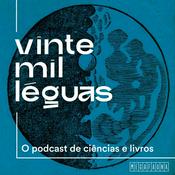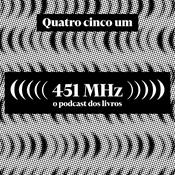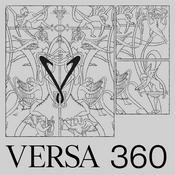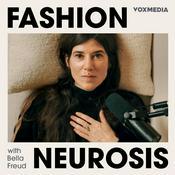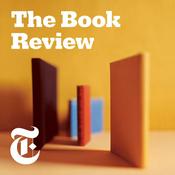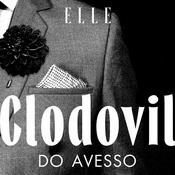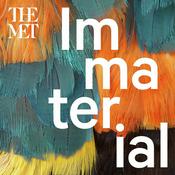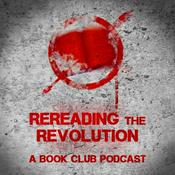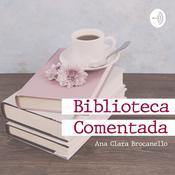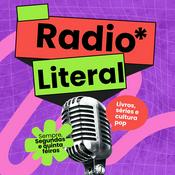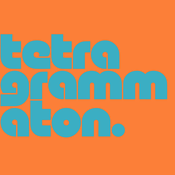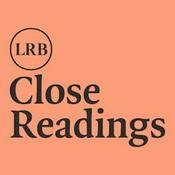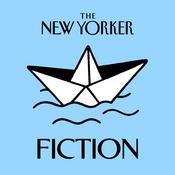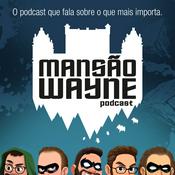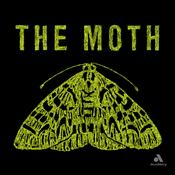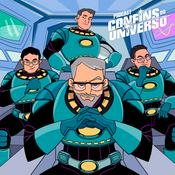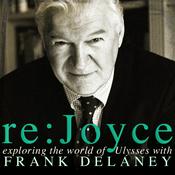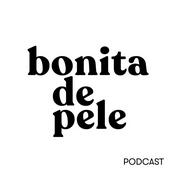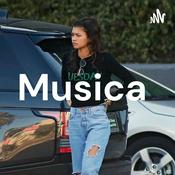Episódios Disponíveis
5 de 997
- Mariana Ortega, "Carnalities: The Art of Living in Latinidad" (Duke UP, 2024)How can habits of racialization be affected by art, in its reception and its creation? How can a carnal aesthetics help us understand Latinx life? What if we listen to photographs? How might they undo us? Can we be undone? In Carnalities: The Art of Living in Latinidad (Duke UP, 2025), Mariana Ortega focuses on photography using a hermeneutics of love and critical phenomenology to think about and with creative practices of primarily Latinx artists. Moving from the ocular to the mouthly, Ortega opens up possibilities for being affected by art. She also shows how artists use aesthetic practices to transform themselves, the possibilities for life, and as means to refuse to forget the dead. Learn more about your ad choices. Visit megaphone.fm/adchoices Support our show by becoming a premium member! https://newbooksnetwork.supportingcast.fm/art--------1:16:41
- Ulinka Rublack, "Dürer's Coats: Renaissance Men and Material Cultures of Social Recognition" (CEU Press, 2025)Jana Byars meets one of her academic heroes when Ulinka Rublack joins her to talk about Dürer's Coats: Renaissance Men and Material Cultures of Social Recognition (Routledge, 2025). During the Renaissance, clothing became more and more elaborately decorated and expensive. It often emphasised the privilege of the male elite. Yet clothing could also subvert or reshape conventional cultural norms. This book draws on the case of Albrecht Dürer to examine Renaissance male outerwear as a key element of signalling communication in everyday life. The recognised artist fought for the esteem of urban creators. In asserting his dignity and taste, outerwear was particularly important to Dürer and his time. Ulinka Rublack argues that cloaks and gowns gained in importance during this period and were among the things that mediated social relationships for centuries to come. An investigation into outerwear opens a new window into how people and things were connected in the Renaissance and how important clothing was in shaping subjectivities in everyday life. Using the example of Dürer and his wife as emerging social types, the study follows the artist and the men and women of his time through the streets of Venice, Nuremberg, Augsburg and Antwerp. It poses pressing questions about Albrecht Dürer's entanglement in unequal networks of global trade and the German Renaissance Atlantic. Learn more about your ad choices. Visit megaphone.fm/adchoices Support our show by becoming a premium member! https://newbooksnetwork.supportingcast.fm/art--------37:35
- Shilla Lee , "Crafting Rural Japan: Traditional Potters and Rural Creativity in Regional Revitalization" (Routledge, 2024)Centering collaborations and frictions around a Japanese town’s pottery industry, Crafting Rural Japan: Traditional Potters and Rural Creativity in Regional Revitalization (Routledge, 2024)n discusses the place of creative village policy in the revitalization of rural Japan, highlighting how rural Japan is moving from a state of regional extinction to regional rejuvenation. Using the case study of Tamba Sasayama in Hyogo Prefecture, where collective initiatives by local government and the role of the local traditional potters are invested in fostering an aura of creativity in the region, the book examines the complex social relations and the intertwining values of different actors to illustrate how a growing outlook on creativity, rurality, and rural creativity requires a renewed perspective on and of rural Japan. Based on extensive field research, Crafting Rural Japan will be a valuable resource for students and scholars of Japanese studies, rural studies, and anthropology. Shilla Lee is a postdoctoral researcher at the Institut für Modernes Japan, Heinrich-Heine-Universität Düsseldorf. Her work explores contemporary craft and its entanglements with social change and post-growth perspectives emerging from rural Japan. Yadong Li is a socio-cultural anthropologist-in-training. He is registered as a PhD student at Tulane University. His research interests lie at the intersection of political ecology, critical development studies, and the anthropology of time. More details about his scholarship and research interests can be found here. Learn more about your ad choices. Visit megaphone.fm/adchoices Support our show by becoming a premium member! https://newbooksnetwork.supportingcast.fm/art--------1:04:36
- Stephen Murphy, "Buddhist Landscapes: Art and Archaeology of the Khorat Plateau, 7th to 11th Centuries (NUS Press, 2024)This important new work, Buddhist Landscapes: Art and Archaeology of the Khorat Plateau, 7th to 11th Centuries (NUS Press, 2023) by Stephen Murphy, build on extensive fieldwork and archaeological surveys to reveal the Khorat Plateau as having a distinctive Buddhist culture, including new forms of art and architecture, and a characteristic aesthetic. By combining archaeological and art historical analysis with an historical ecology approach, Murphy traces the outlines of Buddhism’s spread into the region, along its major river systems. In this episode, hosted by Natali Pearson, Murphy shows how he has read this history into and against the Khorat landscape, attending to the emergence of monumental architecture such as stūpa, and Buddha images carved into the rockfaces of hills and mountainsides, and the importance on the Khorat Plateau of the use of boundary markers, or sīmā. This book provides a new picture of the region in the first and early second millennia, adding to our understanding of the development of Buddhism in Southeast Asia, and offering a new basis for other regionally-focused scholarship to thrive —from textual Buddhology to history to anthropology. As Murphy explains, this opens up new possibilities for understanding the early spread of Buddhism within different landscapes across Asia. Dr Stephen A. Murphy specialises in the art and archaeology of early Buddhism and Hinduism in Thailand, Laos, Myanmar, Cambodia and Malaysia. He is the Pratapaditya Pal Senior Lecturer in Curating and Museology of Asian Art, and Chair of the Centre of South East Asian Studies, at SOAS University of London. Learn more about your ad choices. Visit megaphone.fm/adchoices Support our show by becoming a premium member! https://newbooksnetwork.supportingcast.fm/art--------55:48
- Jean-Thomas Tremblay, "Breathing Aesthetics" (Duke UP, 2022)In Breathing Aesthetics (Duke University Press (2022), Jean-Thomas Tremblay argues that difficult breathing indexes the uneven distribution of risk in a contemporary era marked by the increasing contamination, weaponization, and monetization of air. Tremblay shows how biopolitical and necropolitical forces tied to the continuation of extractive capitalism, imperialism, and structural racism are embodied and experienced through respiration. They identify responses to the crisis in breathing in aesthetic practices ranging from the film work of Cuban American artist Ana Mendieta to the disability diaries of Bob Flanagan, to the Black queer speculative fiction of Renee Gladman. In readings of these and other minoritarian works of experimental film, endurance performance, ecopoetics, and cinema-vérité, Tremblay contends that articulations of survival now depend on the management and dispersal of respiratory hazards. In so doing, they reveal how an aesthetic attention to breathing generates historically, culturally, and environmentally situated tactics and strategies for living under precarity. Learn more about your ad choices. Visit megaphone.fm/adchoices Support our show by becoming a premium member! https://newbooksnetwork.supportingcast.fm/art--------1:03:40
Mais podcasts de Arte
Podcasts em tendência em Arte
Sobre New Books in Art
This podcast is a channel on the New Books Network. The New Books Network is an academic audio library dedicated to public education. In each episode you will hear scholars discuss their recently published research with another expert in their field.
Discover our 150+ channels and browse our 28,000+ episodes on our website: newbooksnetwork.com
Subscribe to our free weekly Substack newsletter to get informative, engaging content straight to your inbox: https://newbooksnetwork.substack.com/
Follow us on Instagram and Bluesky to learn about more our latest interviews: @newbooksnetwork
Support our show by becoming a premium member! https://newbooksnetwork.supportingcast.fm/art
Site de podcastOuça New Books in Art, vinte mil léguas e muitos outros podcasts de todo o mundo com o aplicativo o radio.net
Obtenha o aplicativo gratuito radio.net
- Guardar rádios e podcasts favoritos
- Transmissão via Wi-Fi ou Bluetooth
- Carplay & Android Audo compatìvel
- E ainda mais funções
Obtenha o aplicativo gratuito radio.net
- Guardar rádios e podcasts favoritos
- Transmissão via Wi-Fi ou Bluetooth
- Carplay & Android Audo compatìvel
- E ainda mais funções

New Books in Art
Leia o código,
baixe o aplicativo,
ouça.
baixe o aplicativo,
ouça.
